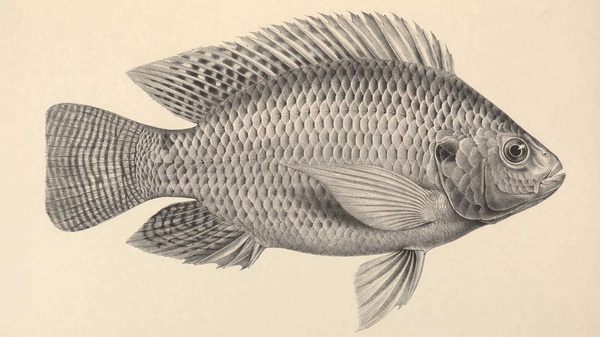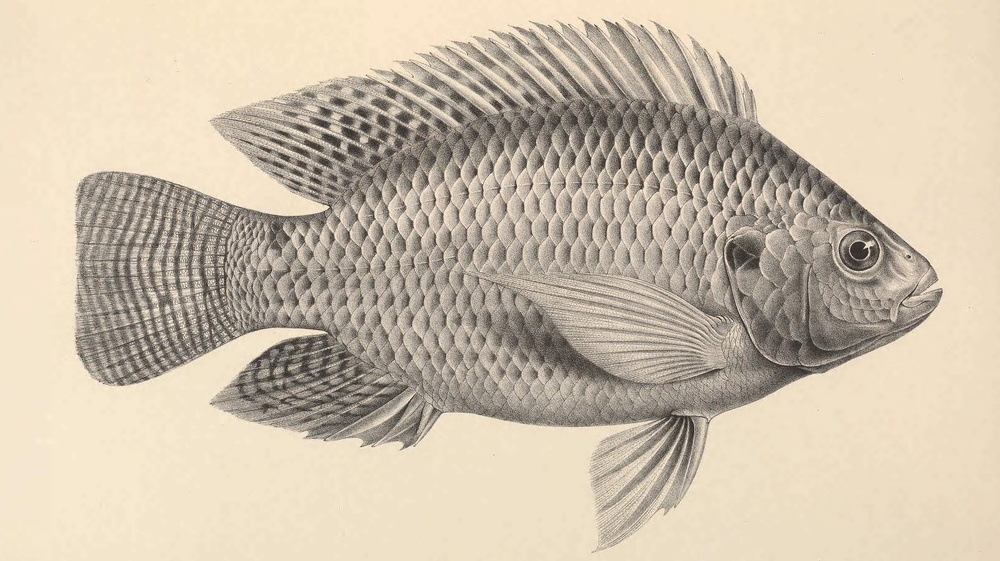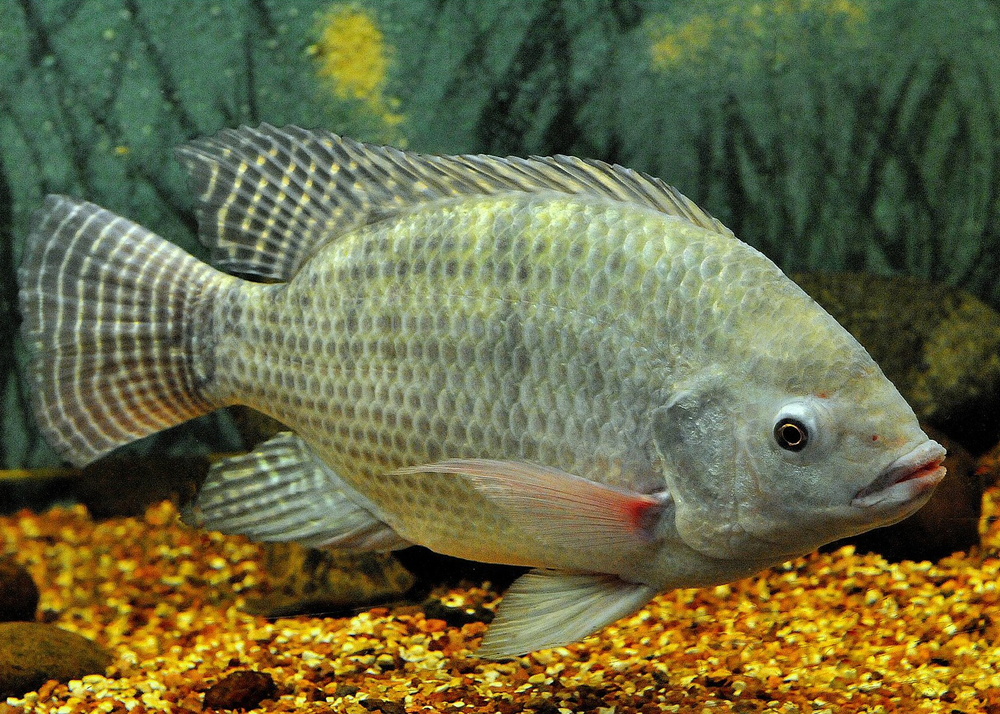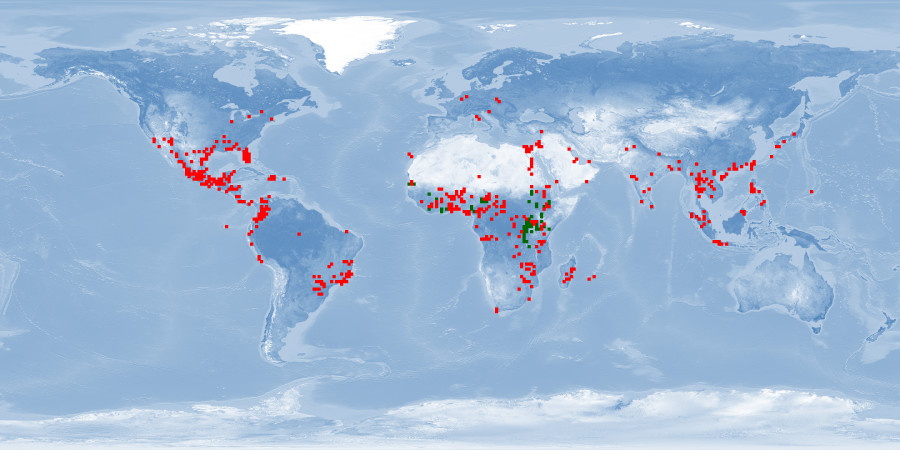Information
Version: B | 1.2 (2023-07-26)
B | 1.2 (2023-07-26)
link corrections
Changelog
1 Overview
2 General
- Escapes: rear only in environments where it naturally occurs D1 and prevent escapes. Else, escapees from fish farms have negative or at most unpredictable influences on the local ecosystem D2. Prepare for sexual maturity (and thus spawning) from 2 months or 7 cm or 16 g on D3 and take measures against spawning into the wild.
3 Designing the (artificial) habitat
3.1 Substrate and/or shelter
- Substrate:
- Substrate: in the wild, lives over sand and mud D4. For the most natural solution, provide sand and mud; alternatively, provide gravel D5. Bamboo poles increase growth D6. Enrichment with e.g. river pebbles and plastic kelp models probably increases the value for juveniles, but this may cause more intense fights to establish territories D7. Further research needed to determine whether this holds also in farm environments and in mixed-sex groups with more than two individuals.
- For substrate and...
...spawning ➝ A1,
...occupation ➝ A2.
- Shelter or cover:
- Cover: avoid complete cover in respect for the different diurnal rhythms A3.
- Vegetation: no ethology-based recommendation definable so far.
- Shelters: in the wild, might take shelter from predators in structurally complex wetlands D5. For the most natural solution, provide roots or submerged branches, bushes, or trees; alternatively, provide artificial shelters inside the system (e.g. artificial reef D5) or outside.
3.2 Photoperiod
- Photoperiod: given the distribution D1 D8, natural photoperiod is 9-15 hours, depending on the season. Provide access to natural (or at least simulated) photoperiod and daylight. Keeping Nile tilapia under 24 hours scotoperiod increases mortality and stress compared to a rhythm of "12 hours light, 12 hours dark" D9. Naturally mouthbred from egg to fry stage; if not possible, provide eggs, larvae, and fry with darkness on first 7-18 days after fertilisation D10.
- Light intensity: avoid 1,400 lux, as it increases aggression compared to 280 lux D11. Further research needed.
- Light colour: in stressful situations, e.g. under confinement, provide blue light, as it prevents stress reactions D12. Further research needed. Yellow light might decrease growth variations D13. Further research needed.
- Resting period: allow Nile tilapia a resting period at night or in the dark D14. Keeping them under 24 hours light increases injuries and mortality compared to a rhythm of "12 hours light, 12 hours dark" D9.
3.3 Water parameters
- Temperature: no clear temperature preference, probably best kept at 25-30 °C, eggs at 28 °C D15. Above and below may mean lower survial D16 and growth D17. Adjust temperature when you notice avoidance behaviour. Implemented in aquaculture, temperatures >22 °C demand excellent oxygen levels and a fine-tuned flow-through system to prevent bacterial load.
For temperature and spawning ➝ A1. - Water velocity: no ethology-based recommendation definable so far.
- Oxygen: in the wild, oxygen level is at 0.1-12.0 mg/L D18. Maintain oxygen at >4 mg/L or decrease stocking density D18. Further research needed.
- Salinity: given the distribution, natural salinity is at fresh or brackish water level D1 D8 D19. May tolerate seawater if exposed gradually D20. Further research needed.
- pH: in the wild, ph is at 7.9-8.0 D21. For the most natural solution, maintain this range. Further research needed.
- Turbidity: in the wild, water transparency is at 0.2-0.8 m Secchi depth D22. For the most natural solution, maintain turbidity at this range.
3.4 Swimming space (distance, depth)
- Distance: no ethology-based recommendation definable so far. Provide enough space, bearing in mind the planned stocking density A4.
- Depth:
- Depth range: in the wild, found at 2-6+ m, up to 20 m D23. Provide at least 2-6 m, ideally up to 20 m, bearing in mind the planned stocking density A4. Individuals should be able to choose swimming depths according to life stage and status D23 D24 D25.
- Flight: no ethology-based recommendation definable so far.
- Temperature layers: in habitats with water layers with different temperatures, prepare for individuals migrating to layers with preferred temperatures D15, and avoid crowding in these layers by providing enough space.
4 Feeding
- Alternative species: opportunistic feeder D26, trophic level 2.0 D27. If you have not yet established a Nile tilapia farm, you might consider to opt for a species that can be fed without or with even less fish meal and fish oil in order not to contribute to overfishing by your business D28.
- Protein substitution: if you run a Nile tilapia farm already and administer feed that contains fish meal or fish oil, try to substitute protein feed components that have so far been derived from wild fish catch, while taking care to provide your fishes with a species-appropriate feed D26:
- Invite a feed mill and other fish farmers in your country to jointly establish a recycling syndicate that converts the remainders and the offcuts of fish processing into fish meal and fish oil, separating the production line corresponding to the species of origin in order to avoid cannibalism ➝ fair-fish farm directives (point 6).
- Inform yourself about commercially tested substitutes for fish meal and fish oil, like insect or worm meal or soy, with an appropriate amino and fatty acid spectrum.
- Feed delivery:
- Feeding frequency and time, feed delivery, self-feeders: in the wild, bottom grazer or active pursuer D29. Some evidence of diurnal feeding pattern D14. But because of large inter-individual differences in activity rhythms D14, the most natural solution is to provide food at 1) varying intervals or 2) constant intervals but day as well as night, while making sure not to disturb the resting part of the population. If only diurnal feeding times are possible, make sure nocturnal individuals do not starve by closely monitoring individual weights. Higher growth with 3-4 compared to 2 feeding times D30. Alternatively, install a self-feeder and make sure all Nile tilapia adapt to it. No ethology-based recommendation definable so far on speed and pattern of feed delivery. Note decreased feeding in new situations given personality differences D31 and reduce the amount of food offered accordingly (if not using a self-feeder).
- Food competition: make sure to provide sufficient feed from ca 4-8 days after hatching on D32. Self-feeders could prevent food competition which is stressful D33.
- Particle size: for fry, fingerlings, and juveniles, provide particle sizes of 28 to 25% (with increasing body weight) for fastest growth; particle size for highest food intake is smaller D26.
- Feed enrichment: no ethology-based recommendation definable so far.
5 Growth
- Maturity: in the wild, matures from ca 2 months on D3. Even if manipulating time of maturity were possible, refrain from it, as we have not found studies reporting possible long-term effects on welfare ➝ fair-fish database's understanding of fish welfare.
- Manipulating sex: although manipulating sex is possible D34, refrain from it, as we have not found studies reporting possible long-term effects on welfare ➝ fair-fish database's understanding of fish welfare.
- Sex ratio: in the wild, sex ratio of males to females ranges from 1:1 to 2:1 D35. For the most natural solution, maintain this sex ratio. Although males develop faster and grow bigger than females D36, refrain from monosex (male-only) groups, as we have not found studies reporting possible long-term effects on welfare ➝ fair-fish database's understanding of fish welfare.
- Size-grading: when in small groups, better size-grade juveniles and adults, otherwise they aggressively establish a social hierarchy D37 which increases stress D25. In larger groups, hardly any or no effect of size-grading on growth (density is more important) D38 and comparable aggression in single-size and mixed-size populations D39. So, size-grading does not seem beneficial.
- Other effects on growth:
- Female's age: for bigger eggs and better survival and growth of larvae and fry, prefer 1+ or 2+ females for reproduction over 0+ females D40.
- Polyculture: in the wild, co-exists with Nile perch and Mozambique tilapia D41 and displays food partitioning D26. There are no disdavantages (but also no gains in survival or growth) of polyculture with freshwater prawn D40. For better growth and survival, rear in polyculture with African catfish at density of 30,000 individuals/ha D40. Further research needed.
- Deformities and malformations: no ethology-based recommendation definable so far.
- For growth and...
...resting period ➝ A3,
...light colour ➝ A3,
...water temperature ➝ A5,
...feeding frequency ➝ A6
...stocking density ➝ A4.
6 Reproduction
- Nest building: males and females build nests in sand D42. For the most natural solution, provide sand; alternatively, provide a gravel or sand-bivalve shells mixture layer of at least 3 cm on an area of 85-311 cm2 on average and in 0.6-2 m water depth D42. Adjust conditions if you notice nest defence D43. Blue light of 100-120 lux benefits nest building D44. Note that dominant males seem to build nests predominantly D44.
- Courtship, mating: respect courtship behaviour in which male nudges and encircles female D45. Allow for visual and chemical communication D46 D45 as well as pair bond if individuals display monogamy D47.
- Spawning conditions: respect natural spawning behaviour every 30-90 days and at temperatures >20 °C D48 for 45-120 minutes D49. No ethology-based recommendation definable on salinity, water velocity, depth, and spawning sequence. Since size of eggs, growth of larvae, and survival of fry is related to age of female, prefer 1+ or 2+ year old females over 0+ year old females D40. Successful spawning has been achieved in male:female ratios of 1:1 to 1:10 D50. Further research needed for wild ratios. Note that only dominant males seem to spawn (less clear effect of dominance in females) D51. Further research needed. Allow for visual or visual and chemical communication between males and females for spawning to take place D51.
- Fecundity: in the wild, probably several batches with 20-6,000+ eggs per batch D52. For highest fecundity, prefer older, heavier, and longer females and – if earthen ponds are not possible – concrete tanks over hapa nets D53. For higher sexual activity in females and heavier oocytes, provide a sand layer of 10 cm or better yet an artificial reef of bricks D5. Do not expect higher spawning frequency in males than 2-4 times a day, because higher frequency resulted in less fertilised eggs D54. Even if manipulating fecundity were possible, refrain from it, as we have not found studies reporting possible long-term effects on welfare ➝ fair-fish database's understanding of fish welfare.
- Breeding: mouthbreeder: female takes eggs into mouth after fertilisation and carries 40-240 eggs for 7-18 days D10. For the most natural solution, allow for mouthbreeding for at least three or four days, as this results in no difference in hatchability and survival of fry; from day 5 on, loss of clutch by mouthbreeding might outweigh probable advantages D10. Further research needed. Blue light benefits mouthbreeding D55. Further research needed. If mouthbreeding is not possible, prefer round-bottom over conical hatching jars, as these yield higher hatchability rates and higher probability of survival D55. Further research needed.
7 Stocking density
- Maximum: the businessplan should be calculated on the basis of a maximum stocking density that will never exceed the tolerable maximum with regard to fish welfare.
- Stocking:
- Stocking larvae: no ethology-based recommendation definable so far.
- Stocking juveniles and adults: in captivity, individuals build shoals D56. Further research needed for aggregation in the wild. For better survival and growth, keep fry at 500 individuals/m3, fingerlings at <50 individuals/m3, but this may depend on oxygen levels D57 D58. Further research needed for juveniles and adults.
- Restriction:
- Habitat structuring: consider loss of space due to structures inside and outside the system A7 and calculate density accordingly.
- Environmental conditions: in the wild, displays a large variability in preferences for water temperature D15 and depth D23. Consider increased density at places with preferential conditions A5 A8 and calculate density accordingly.
- Aggregation: in captivity, individuals build shoals D56. Consider increased density at places due to formation of shoals and calculate density accordingly.
- Aggression: choose density given displayed aggression. Further research needed. Aggression may entail attacks, mouth fights, chases, nips, bites D39.
- Territoriality: territorial D59. Consider space loss due to territoriality and calculate density accordingly.
- Interaction: as show the above influence factors, stocking density is only one part of a complex interaction of factors to affect welfare. It should never be considered isolatedly.
8 Occupation
- Food search: provide sand and mud and bamboo poles so that individuals may search for food D6 D29.
- Challenges: if after decreasing stress A9 and providing everything welfare assuring, you still notice stereotypical behaviour, vacuum activities, sadness, then provide mental challenges, diversion, variety, and check reactions.
9 Handling, slaughter
9.1 Handling
- Stress coping styles: individuals differ in their ability to cope with stress D60 D31, so assume the smallest common denominator during stressful situations and handle with care and high efficiency.
- Stress measurement:
- Physiological stress indicators: plasma cortisol exceeding 10-60 ng/mL D33 D57 D12 or whole body cortisol exceeding 15 g/ng body tissue D61 indicates stress.
- Abnormal behaviour: after, e.g., changing parameters, check for behaviour deviating from the norm D5 D29 D14 D62 D23 D42D46 D45 D63 D47 D52 D54 D10 D56 D37 or avoidance behaviour that might be due to fear D64.
Opercular or buccal movements or ventilatory frequency exceeding 55-100 beats/minute D65 D60 D31 D12 indicate stress. Note, though, that the response to the duration of a stressor is non-linear D12 and that individuals differ in their stress response (increase or decrease ventilatory frequency) D60. So, to decide about the impact of a stressor, observe a representative part of the population.
Higher activity, predominantly random swimming, might indicate pain D66.
- Stress reduction:
- Noise: avoid long-term noise of 800 Hertz or higher, as it causes hearing loss D67.
- Directing individuals: to direct individuals in the habitat (e.g., for cleaning purposes), make use of Nile tilapia's ability to be conditionable D68 D69 to reduce stress.
- Cage submergence: no ethology-based recommendation definable so far.
- Pain treatment: no ethology-based recommendation definable so far.
- Handling: handle as carefully as possible, as it causes stress D61. After 60 seconds chase, let recuperate for at least 2 hours D61. If only a sample of individuals is to be handled, separate them from the main population to not stress the uninvolved conspecifics D70. After tail clip, let recuperate for at least 6 h and apply analgesic, as ist causes pain D66. After netting, let recuperate for at least 24 h D61.
- Confinement: avoid confinement, as it causes stress D12. If unavoidable, provide blue light, and after confinement of 30 minutes, let recuperate for at least one hour D12.
- Crowding: no ethology-based recommendation definable so far.
- Transport: no ethology-based recommendation definable so far.
- Disturbance: no ethology-based recommendation definable so far.
- For stress reduction and...
...cover A3,
...light intensity ➝ A3,
...water temperature ➝ A5,
...salinity ➝ A5,
...feed delivery ➝ A6,
...size-grading ➝ A10,
...rearing container for eggs ➝ A1,
...stocking density ➝ A4,
...stunning ➝ A11.
9.2 Slaughter
- Stunning rules: render individuals unconscious as fast as possible and make sure stunning worked and they cannot recover D71.
- Stunning methods: prefer electrical stunning, because it renders individuals unconscious fast if administered correctly and with appropriate current D72. For longer unconsciousness and lower current, prefer side-to-side stunning with 133 Hertz pulsed square wave alternating current over 50 Hertz alternating current D72. Further research needed for a specific protocol. Electrical stunning is also less stressful than, for example, stunning in 50:50 ice water mixture, probably due to higher dissolved oxygen levels in the ice water mixture D73.
- Slaughter methods: refrain from gill-cutting after stunning, as individuals respond to pain stimuli for at least 10 minutes D72. Instead, place in ice water for at least 15 minutes and continue with filleting D72. Further research needed.
10 Certification
- Certification: fair-fish international association warmly advises to follow one of the established certification schemes in aquaculture in order to improve the sustainability of aquafarming. Adhering to the principles of one of these schemes, however, does not result in animal welfare by itself, because all these schemes do not treat animal welfare as a core issue or as an issue at all. Therefore the FishEthoBase has been designed as a complement to any of the established certification schemes. May it help practitioners to improve the living of the animals they farm based on best scientific evidence at hand.
- To give you a short overview of the most established schemes, we present them below in descending order of their attention for animal welfare (which is not necessarily the order of their sustainability performance):
- The fair-fish farm directives are not present on the market, we cite them here as a benchmark.
 The directives address fish welfare directly by being committed to FishEthoBase: for each species, specific guidelines are to be developed mirroring the recommendations of FishEthoBase; species not yet described by FishEthoBase cannot be certified. In addition, the directives address a solution path for the problem of species-appropriate feeding without contributing to overfishing.
The directives address fish welfare directly by being committed to FishEthoBase: for each species, specific guidelines are to be developed mirroring the recommendations of FishEthoBase; species not yet described by FishEthoBase cannot be certified. In addition, the directives address a solution path for the problem of species-appropriate feeding without contributing to overfishing. - The Naturland Standards for Organic Aquaculture (Version 06/2018) generally address
 animal welfare with words similar to the fair-fish approach: "The husbandry conditions must take the specific needs of each species into account as far as possible (…) and enable the animal to behave in a way natural to the species; this refers, in particular, to behavioural needs regarding movement, resting and feeding as well as social and reproduction habits. The husbandry systems shall be designed in this respect, e.g. with regard to stocking density, soil, shelter, shade and flow conditions".
animal welfare with words similar to the fair-fish approach: "The husbandry conditions must take the specific needs of each species into account as far as possible (…) and enable the animal to behave in a way natural to the species; this refers, in particular, to behavioural needs regarding movement, resting and feeding as well as social and reproduction habits. The husbandry systems shall be designed in this respect, e.g. with regard to stocking density, soil, shelter, shade and flow conditions".
In the details, however, the standards scarcely indicate tangible directives the only ones for Nile tilapia being: no growout in artificial tanks, stocking density limited to 10 kg fish/m3 max, natural vegetation (in ponds only) on at least 5% of the production area. - The GAA-BAP Finfish and Crustacean Farms Standard (Issue 2.4, May 2017) directly
 addresses animal welfare: "Producers shall demonstrate that all operations on farms are designed and operated with animal welfare in mind." Farms shall "provide well-designed facilities", "minimize stressful situations" and train staff "to provide appropriate levels of husbandry". Yet the standard does not provide tangible and detailed instructions for the practitioner, let alone species-specific directives.
addresses animal welfare: "Producers shall demonstrate that all operations on farms are designed and operated with animal welfare in mind." Farms shall "provide well-designed facilities", "minimize stressful situations" and train staff "to provide appropriate levels of husbandry". Yet the standard does not provide tangible and detailed instructions for the practitioner, let alone species-specific directives.
In September 2017, GAA-BAP received a grant from the Open Philanthropy Project to develop best practices and proposed animal welfare standards for salmonids, tilapia, and channel catfish. Thus, fish welfare on GAA-BAP certified farms might become more tangible in the future. - The GlobalG.A.P. Aquaculture Standard (Version 4.0, March 2013) "sets criteria for legal
 compliance, for food safety, worker occupational health and safety, animal welfare, and environmental and ecological care". The inspection form includes criteria like "Is the farm management able to explain how they fulfil their legal obligations with respect to animal welfare?", "If brood fish are stripped, this should be done with the consideration of the animal's welfare." or "Is a risk assessment for animal welfare undertaken?". The scheme claims that 45 out of a total of 249 control points cover animal protection, yet it does not provide any tangible directives, let alone species-specific directives.
compliance, for food safety, worker occupational health and safety, animal welfare, and environmental and ecological care". The inspection form includes criteria like "Is the farm management able to explain how they fulfil their legal obligations with respect to animal welfare?", "If brood fish are stripped, this should be done with the consideration of the animal's welfare." or "Is a risk assessment for animal welfare undertaken?". The scheme claims that 45 out of a total of 249 control points cover animal protection, yet it does not provide any tangible directives, let alone species-specific directives. - The ASC Aquaculture Stewardship Council.
 The ASC standards address fish welfare only indirectly, as a function of a “minimum average growth rate" per day, a "maximum fish density at any time", and a "maximum average real percentage mortality". fair-fish sees animal welfare as an intrinsic value, not just as a result of optimising neighbouring values like health care and management procedures.
The ASC standards address fish welfare only indirectly, as a function of a “minimum average growth rate" per day, a "maximum fish density at any time", and a "maximum average real percentage mortality". fair-fish sees animal welfare as an intrinsic value, not just as a result of optimising neighbouring values like health care and management procedures.
The ASC standard for Tilapia (version 1.2, March 2019) specifies threshold values for mortality indirectly, but not for growth rate and stocking demsity.
In November 2017, ASC received a grant from the Open Philanthropy Project to develop an evidence-based fish welfare standard that is applicable to all ASC-certified species. ASC intends to share its approach to fish welfare with all farms engaged with the ASC program and encourage adoption of it, which means that the fish welfare standard will function as a non-mandatory add-on to the ASC certification. - The Friend of the Sea (FOS) Standards for freshwater aquaculture of fish (revised October 2016)
 do not even address animal health or animal welfare issues.
do not even address animal health or animal welfare issues.
In May 2017 however, FOS signed a Memory of Understanding with fair-fish international on developing fish welfare criteria for the FOS standard. In November 2017 fair-fish international association received a grant from the Open Philanthropy Project to assess the welfare of fish on FOS certified farms, develop farm-specific recommendations, and to develop animal welfare criteria for the FOS standard. Thus, fish welfare on FOS certified farms might become tangible in the future.
- The fair-fish farm directives are not present on the market, we cite them here as a benchmark.
❮
❯



«





